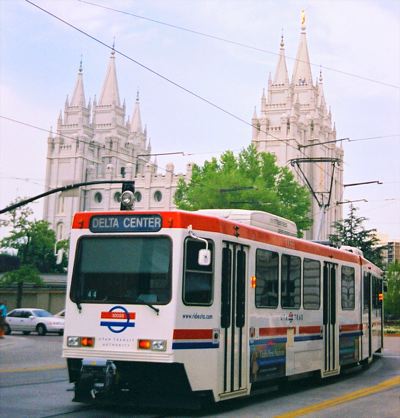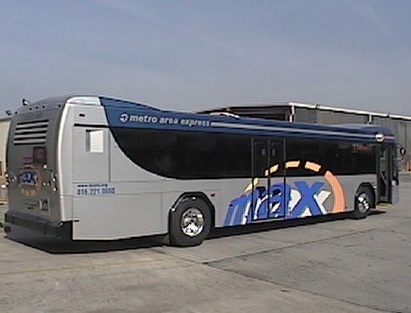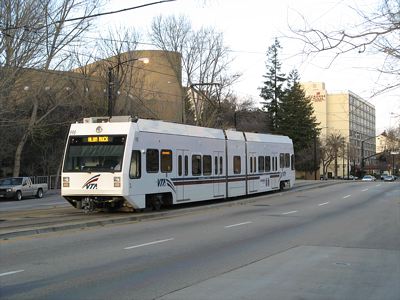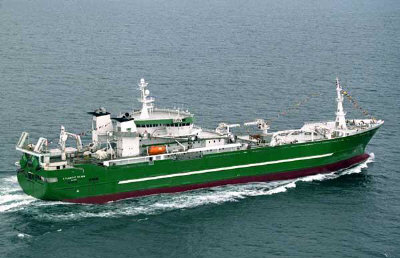What better way to celebrate April Fools week than with a series of transit follies! Each day this week, the Antiplanner will describe a transit folly that is not in Portland, Denver, San Jose, or another city that I’ve harped on so much in the past. By the end of the week, I hope you will agree that transit agencies everywhere in the U.S. have been made foolish by the misincentives created by federal pork barrel.
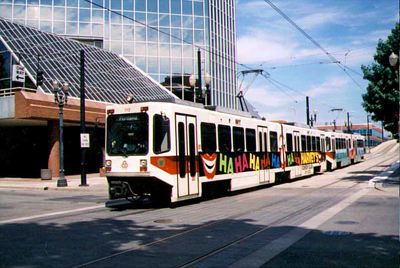
Light-rail trains get a chuckle over how transit agencies have fooled taxpayers into supporting their ridiculously expensive rail lines.
First up is the North Shore Connector, an extension of Pittsburgh’s light-rail system. Imagine you run the Port Authority of Allegheny County, the transit agency that serves Pittsburgh, a region of about 1.5 million people. But your region’s population is declining. Pittsburgh’s population is declining. Downtown Pittsburgh is declining. Transit ridership is dropping like a stone.
So what do you do? Why, spend $435 million on a 1.2-mile extension of your light-rail line! Of course, it is so logical. Especially when most of it is other people’s money (or, as a powerful Pennsylvania state senator calls it, “OPM”).
Continue reading →

